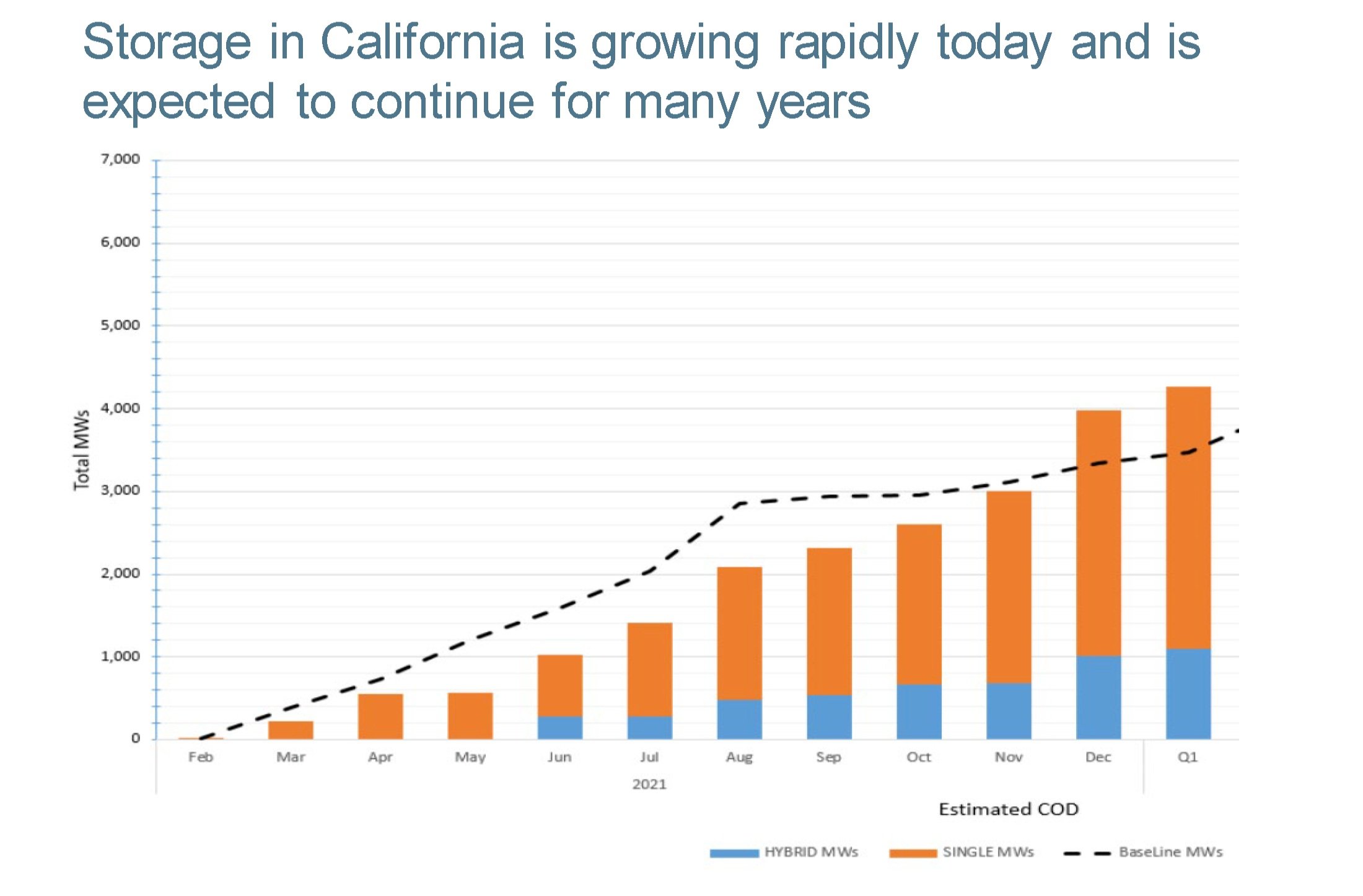Energy Storage’s Evolution from Periphery to Pole Position in California’s Grid Modernization
By Alex Morris, Executive Director
December 13, 2021
Preparing my remarks for the final ESACon conference earlier this month, I got a bit nostalgic when I began to reminisce about the first shows I attended and how much our industry has grown over the past decade, particularly in the last few years.
Source: California ISO
Today, there’s no doubt about the foundational role energy storage plays in supporting a resilient, reliable, clean, and flexible electric grid in California, the world’s largest and most mature market. Energy storage is unquestionably a success story for the state — and a technology that I believe California’s grid operator and its consumers now cannot live without.
Not only does California need a robust storage infrastructure to support its ambitious decarbonization goal to procure 100% of its electricity from renewable energy resources by 2045. As thermal retirements continue, and with additional major closures planned, including the 2.2 GW Diablo Canyon nuclear facility by 2025, California’s grid operator must integrate thousands of megawatts of new, variable clean energy resources like wind and solar generation with little to no disruption to normal grid operations. Add to this mix the impacts of climate change, including historically low hydropower resources from low mountain snowpack and ongoing drought, as well as extreme heat waves that drive up customer demand, and the value streams that energy storage delivers become increasingly valuable and necessary.
The most immediately salient value storage provides for California, however, is that the exponential growth of operating grid-connected storage in the state — a 6-fold increase for standalone storage, from about 500 MW in summer of 2020 to over 3,000 MW by the end of 2021 — helped to save it from rolling blackouts during this past summer’s massive heatwave. Think about it: The world’s 5th largest economy and contributor of 15% of U.S. GDP now needs our industry to help keep the lights on. Quite the change from just one year ago!
As the state continues to expect our industry to deliver, we need to deploy storage even more quickly and efficiently. The California Energy Storage Alliance (CESA) estimates California will need at least an additional 10,000 MW of new storage in the next decade. Doing so requires a big shift in focus from one of theory and frameworks to one of execution.
Financing and contracting mechanisms require greater certainty. Stable market signals, clear pricing, and longer-lead times in procurement will reduce costs for California by enabling more market entry for emerging storage technologies and lowering financing barriers. Standardized contracts, reduced negotiation and approval times, and cooperation and understanding among permitting authorities is also essential.
Owners and operators have to contend with and master vital functions including long-term operations, ongoing market participation, scheduling, and maintenance. From a safety perspective, the state has work to do on streamlining the process for safe siting and permitting of these systems, as well as training first responders in how to deal with systems designed to hold very large quantities of energy.
Add it up, and we as an industry have a lot of work ahead of us. As a membership-based organization, CESA is committed to building trust among key stakeholders and ensuring our industry continues to underscore the increasingly critical role energy storage plays in preserving California’s role as an innovation engine and a clean energy leader. The strength of our 100+ member network is our greatest asset as we work together to support our industry’s next phase of growth.
To learn more about CESA and the vital role it plays in accelerating California’s grid modernization, please contact our Membership Manager, Emily Yan.


